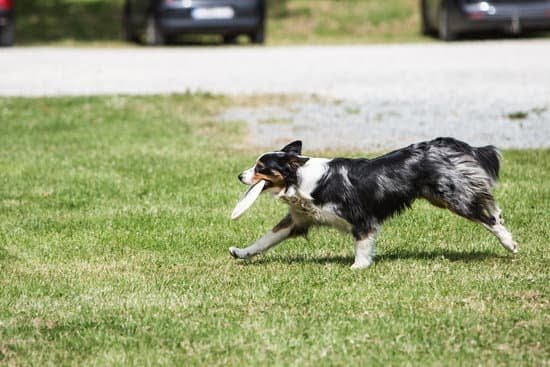As pet owners, we want to ensure that our senior dogs are comfortable and have the freedom to move around their environment. One way to accomplish this is by training them to use a doggy door. This article will provide valuable tips on how to train senior dogs to use a doggy door, allowing them the independence they deserve in their golden years.
Senior dogs may be hesitant to use a doggy door due to various reasons such as physical limitations, anxiety, or fear of the unknown. Understanding these hesitancies is crucial in successfully training them. By identifying the underlying factors causing their reluctance, we can tailor our approach and make the training process more effective and less stressful for our beloved pets.
When it comes to senior dogs, not all doggy doors are created equal. It’s important to choose the best type of doggy door that suits your senior dog’s needs and abilities. Whether it’s a flap-style door or an electronic door with sensors, selecting the right one can make a significant difference in how quickly your senior dog adapts to using it.
Identifying the Best Type of Doggy Door for Senior Dogs
As senior dogs age, they may experience certain physical limitations that make using a standard doggy door challenging. It’s important to identify the best type of doggy door for senior dogs to ensure their comfort and safety. Here are some considerations when choosing a doggy door for your senior companion:
- Size and height: Select a doggy door that is large enough for your senior dog to comfortably pass through and at a height that doesn’t require them to strain or jump.
- Easy access: Look for a doggy door with a low threshold or one that is electronic and can be activated by your senior dog wearing a special collar or tag.
- Safety features: Choose a doggy door that has safety features such as locking mechanisms to prevent unwanted animals from entering your home.
When considering these factors, you can ensure that the doggy door you choose will be accessible and safe for your senior dog to use without causing any unnecessary stress or discomfort.
Additionally, it’s important to note that some senior dogs may have specific needs due to medical conditions such as arthritis or mobility issues. In such cases, consulting with your veterinarian can provide valuable insight into the most suitable type of doggy door for your senior dog.
Ultimately, selecting the best type of doggy door for your senior companion will contribute to their overall well-being and make the training process much smoother as they learn how to use this new access point to the outdoors.
Creating a Positive Association With the Doggy Door
When starting the training process, begin by placing the dog’s favorite treats near the doggy door. This will help your senior dog associate the area around the door with positive experiences. Gradually move the treats closer to the opening of the door, encouraging your dog to approach it on their own. Once they start showing interest in the door, continue using treats and praise as a form of positive reinforcement.
Consistency is key when creating a positive association with the doggy door. Make sure to set aside dedicated training time each day and be patient with your senior dog as they learn this new skill. It’s also important to remain calm and encouraging during training sessions, as any signs of frustration or impatience can negatively impact your dog’s willingness to participate.
By using treats, positive reinforcement, and maintaining consistency, you can help your senior dog develop a positive association with the doggy door and make the training process an enjoyable experience for both you and your beloved pet.
| Training Method | Effective Level |
|---|---|
| Using Treats and Positive Reinforcement | High |
| Consistency in Training | High |
| Calmness During Training | High |
Patience and Consistency in Training
Senior dogs may take longer to adapt to new habits and routines, including learning to use a doggy door. It’s important for pet owners to understand the need for patience and consistency in training their senior dogs in this aspect.
Setting Realistic Expectations
It’s essential for pet owners to set realistic expectations when training their senior dogs to use a doggy door. Senior dogs may have physical limitations or cognitive decline that can affect their ability to learn new behaviors quickly. Understanding this can help pet owners remain patient throughout the training process.
Consistent Routine
Consistency is key when it comes to training senior dogs. Establishing a consistent routine for letting your senior dog out through the doggy door can help them become familiar with using it. This routine should include regular potty breaks, as well as scheduled training sessions to reinforce positive behavior.
Adapting to Individual Needs
Each senior dog is unique, and their training needs may vary. Some may require more time and reinforcement before feeling comfortable using the doggy door, while others may catch on quicker. Paying attention to your senior dog’s individual needs and adjusting the training approach accordingly is crucial for success.
By taking a patient and consistent approach, pet owners can effectively train their senior dogs to use a doggy door, ultimately providing them with the freedom and independence they deserve in their golden years.
Using Treats and Positive Reinforcement
When it comes to training a senior dog to use a doggy door, using treats and positive reinforcement can be extremely effective. As dogs age, they may become more hesitant or resistant to changes in their routine, so it’s important to create a positive association with the doggy door. One way to do this is by using treats and rewards to encourage your senior dog to approach and eventually use the door.
To begin, start by placing treats near the doggy door to entice your senior dog to come closer. You can also try placing the treats just inside the door to encourage them to take that first step through. It’s important to be patient and consistent in your efforts, as it may take some time for your dog to feel comfortable using the door.
In addition to using treats, positive reinforcement is crucial in training your senior dog. When your dog shows any interest in or approaches the doggy door, be sure to shower them with praise and affection. This will help them associate positive feelings with the door and make them more likely to continue investigating it. By consistently rewarding and encouraging their behavior, you can help your senior dog overcome any hesitancy they may have towards using the doggy door.
Gradual Introduction to the Doggy Door
As senior dogs age, they may become more hesitant to try new things or adapt to changes in their environment. This can make training them to use a doggy door a bit more challenging than it would be with a younger dog. However, with patience and the right approach, you can successfully teach your senior dog to use the doggy door and enjoy the newfound freedom it provides.
Understanding Senior Dog Hesitancy
Senior dogs may have an understandable hesitancy when it comes to trying new things, and this includes using a doggy door. They may not be as agile as they once were, making it harder for them to navigate through the door on their own. Additionally, changes in vision or hearing could also contribute to their reluctance. Understanding and acknowledging these factors is crucial in devising a training plan that suits your senior dog’s specific needs.
Identifying an Appropriate Training Method
When introducing your senior dog to the doggy door, consider their comfort level with new experiences and take incremental steps. While some dogs may be ready to take on the challenge fairly quickly, others may need more time and support.
Using techniques such as positive reinforcement, treats, and gentle encouragement can help build their confidence and create a positive association with the doggy door. It’s important to keep in mind that every senior dog is different, so tailoring the training method according to your pet’s individual needs is vital.
Promoting Positive Reinforcement
The key to successful training is promoting positivity throughout the process. By ensuring that your senior dog feels rewarded for even small progress towards using the doggy door, you can encourage them to continue trying until they are comfortable with it. Celebrating every step towards success can help alleviate any fears or anxieties they may have about using the door.
By gradually introducing your senior dog to the doggy door and taking into consideration their individual needs and comfort level, you can effectively train them to use it successfully. Remember that this process requires patience, understanding, and consistent effort – but seeing your senior dog enjoying their newfound freedom will make it all worthwhile.
Overcoming Fears and Anxieties
Senior dogs may have developed certain fears and anxieties over the years, which can make it challenging to train them to use a doggy door. One common fear is of unfamiliar or small spaces, which can cause hesitation when approaching the doggy door. It’s important to understand that this fear is real for senior dogs and will require patience and understanding to overcome.
To help your senior dog overcome their fears and anxieties, it’s crucial to create a positive association with the doggy door. This can be done by using treats and positive reinforcement every time your dog goes near the door, even if they don’t actually use it at first. Providing verbal praise and affection can also help ease their anxiety and build confidence in approaching the doggy door.
Another effective method is gradual introduction to the doggy door. Start by propping the door open so that your senior dog can get used to the idea of it being there without feeling trapped. Encourage them to walk through it with treats and reassurance. Over time, gradually lower the flap until they are comfortable pushing through it on their own.
No data available for this section.
Troubleshooting Common Issues
Training a senior dog to use a doggy door can come with its own set of challenges. It is important to be patient and understand that it may take some time for your furry friend to get the hang of using the door. Here are some common issues you might encounter and how to troubleshoot them:
1. Door Size: If your senior dog is having trouble using the doggy door, it could be because the size of the door is not appropriate for them. Ensure that the door is large enough for your dog to comfortably pass through without any hesitation or fear.
2. Fear of Noise: Some senior dogs may be scared of the noise that the doggy door makes when it flaps or closes. To address this issue, gradually introduce your dog to the sound by opening and closing the door manually while giving them treats and praise to create a positive association with the noise.
3. Anxiety: Senior dogs may experience anxiety when faced with new things, including a doggy door. To help alleviate their anxiety, spend time sitting near the door with your dog and offering them treats and affection. Slowly encourage them to approach the door on their own terms.
4. Physical Limitations: If your senior dog has mobility issues, they may struggle with using the doggy door. Consider installing a low-rise or electronic doggy door that opens automatically when your pet approaches, making it easier for them to go in and out without exerting too much effort.
Remember, every senior dog is different, so it’s important to approach training with patience and understanding. With consistent training and positive reinforcement, most senior dogs can learn how to use a doggy door and enjoy newfound independence in their surroundings.
Celebrating Success and Enjoying the Newfound Freedom for Your Senior Dog
As we wrap up our discussion on how to train senior dogs to use a doggy door, it’s important to highlight the significance of celebrating success and enjoying the newfound freedom for your furry friend. Training a senior dog to use a doggy door can be a rewarding and fulfilling experience for both you and your pet.
By following the tips and techniques outlined in this article, you can help your senior dog overcome hesitancy and anxiety, ultimately allowing them to independently access the outdoors.
It’s crucial to remember that patience and consistency are key when it comes to training senior dogs. The process of creating a positive association with the doggy door may take time, but with dedication and love, your pet will eventually understand how to use it. Using treats and positive reinforcement can also go a long way in motivating your senior dog to embrace the new concept.
Ultimately, overcoming fears and anxieties associated with using the doggy door is an essential part of the training process. As you gradually introduce your senior dog to the door and troubleshoot any common issues they may face, it’s important to celebrate every small success along the way.
Once your senior dog has successfully mastered using the door, you can both enjoy the newfound freedom that comes with it. With patience, love, and perseverance, you’ll be amazed at how quickly your senior dog adapts to their new way of accessing the outdoors.
Frequently Asked Questions
How Do I Get My Older Dog to Use a Doggie Door?
To get your older dog to use a doggie door, start by keeping the door open and encourage your dog to investigate it. Use treats and positive reinforcement when your dog shows interest in the door. Gradually guide them through the door and repeat this process until they feel comfortable using it on their own.
How Long Does It Take for a Dog to Get Used to a Doggy Door?
The time it takes for a dog to get used to a doggy door varies from dog to dog. Some dogs may take just a few days to start using the door confidently, while others may take longer. Patience and consistent encouragement are key in helping your dog adjust to the new door.
Why Won’t My Dog Go Through the Doggy Door?
There could be various reasons why your dog won’t go through the doggy door. It’s possible that they are afraid of the flap or unsure about how to use it.
Other factors like previous negative experiences or lack of motivation could also be causing reluctance. Take time to observe and understand your dog’s behavior and work on addressing their specific concerns or fears about the door.

Welcome to the blog! I am a professional dog trainer and have been working with dogs for many years. In this blog, I will be discussing various topics related to dog training, including tips, tricks, and advice. I hope you find this information helpful and informative. Thanks for reading!





